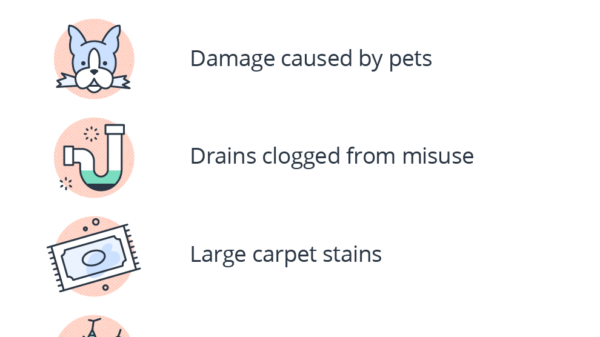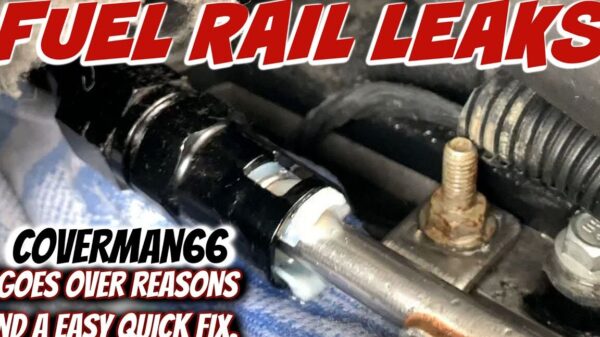📰 Table Of Contents
- 1 How To Fix Car Paint Bubbles: Step-by-Step Guide
- 2 DIY Paint Job With Rattle Cans
- 3 How can one flatten paint bubbles?
- 4 How can bubbling paint be fixed without repainting?
- 5 How can the issue of bumpy paint on a car be resolved?
- 6 Why are there small air bubbles in my car’s paint?
- 7 Questions you’ve probably asked yourself
How To Fix Car Paint Bubbles: Step-by-Step Guide
How To Fix Car Paint Bubbles: Step-by-Step Guide
Car paint bubbles can be a frustrating issue for car owners. Not only do they mar the appearance of the vehicle, but they can also lead to further damage if left untreated. Luckily, fixing car paint bubbles is a relatively simple process that can be done at home with the right tools and techniques. Here’s a step-by-step guide to help you fix car paint bubbles effectively.
Step 1: Identify the Cause of Bubbles
Before you start fixing the paint bubbles on your car, it’s essential to identify the root cause. Bubbles can occur due to several reasons, including improper paint application, moisture trapped underneath the paint, or even rust formation. By understanding the cause, you can take appropriate steps to prevent future bubbles from forming.
Step 2: Gather the Necessary Tools
To fix car paint bubbles, you’ll need some specific tools and materials. These include sandpaper, a sanding block, a putty knife, a heat gun or hairdryer, automotive primer, and matching paint for your car. Ensure you have all these tools ready before starting the repair process.
Step 3: Prepare the Surface
Begin by washing the affected area thoroughly. Use a mild soap and water solution to remove any dirt or debris. Once clean, use a sandpaper with a grit of around 320 to gently sand down the affected area. This will help create a smooth surface for the paint repair.
Step 4: Remove the Bubbles
Using a putty knife, carefully scrape off the paint bubbles. Be gentle to avoid causing any further damage to the surrounding area. Once the bubbles are removed, use sandpaper to blend the edges of the area where the bubbling occurred.
Step 5: Apply Primer and Paint
Apply a thin layer of automotive primer to the repaired area. This will help ensure the new paint adheres properly. Once the primer is dry, use the matching paint to cover the repaired section. Apply several thin coats, allowing each coat to dry before adding the next.
Step 6: Blend and Buff
Once the paint has dried completely, use a sanding block with a higher grit (around 1000) to blend the newly painted area with the surrounding paint. Be gentle and take your time to achieve a seamless transition. After blending, buff the area with a polishing compound to restore shine.
Step 7: Protect and Prevent
To protect your car’s paint in the future, consider applying a clear coat over the repaired area. This will provide an added layer of protection against elements and prevent further paint damage.
By following these step-by-step instructions, you can effectively fix car paint bubbles and restore your vehicle’s appearance. Remember to take your time, be patient, and pay attention to detail for the best results.
DIY Paint Job With Rattle Cans
How can one flatten paint bubbles?
To flatten paint bubbles, you’ll need to follow these steps:
1. Inspect the affected areas: Carefully examine the surface to identify all the paint bubbles. Look for any loose or peeling paint as well.
2. Prepare the surface: Use a putty knife or scraper to gently remove any loose or peeling paint. Be careful not to damage the underlying surface. Smooth out the edges of the remaining paint bubbles with sandpaper.
3. Repair any damaged areas: If the paint bubbles have caused any damage to the surface, such as cracks or holes, you’ll need to repair them before proceeding. Use a suitable filler or spackling compound to fill in the damaged areas, following the manufacturer’s instructions.
4. Sand the repaired areas: Once the filler or spackling compound has dried, use sandpaper to smooth it down and blend it with the surrounding surface. Start with a coarse grit sandpaper and gradually switch to finer grits for a smoother finish.
5. Clean the surface: Before applying new paint, make sure the surface is clean and free of dust or debris. Wipe it down with a damp cloth or sponge, and allow it to dry completely.
6. Apply primer: Apply a coat of primer to the repaired areas and the surrounding surface. The primer will help the new paint adhere better and ensure a more even finish.
7. Paint the surface: Once the primer is dry, apply a coat of paint to the entire surface, including the repaired areas. Use a brush or roller, depending on the size of the area. Allow the paint to dry according to the manufacturer’s instructions, then apply additional coats if necessary.
Remember, prevention is key to avoiding paint bubbles in the future. Make sure to properly prepare the surface before painting, use high-quality paints and tools, and apply thin, even coats.
How can bubbling paint be fixed without repainting?
To fix bubbling paint without repainting, follow these steps:
1. Identify the cause: Bubbling paint can occur due to moisture issues, improper surface preparation, or using the wrong type of paint. It is essential to determine the root cause to prevent future problems.
2. Scrape and sand: Use a putty knife or scraper to remove the bubbled or peeling paint. Once the loose paint is removed, sand the affected area lightly to create a smooth surface.
3. Repair any damage: If there are any cracks, dents, or holes in the wall, fill them with spackle or joint compound. Smooth out the repaired areas using sandpaper once they are dry.
4. Prime the area: Apply a coat of primer to the repaired section. This will ensure proper adhesion and help prevent further bubbling.
5. Feather the edges: Feather the edges of the primer using sandpaper to create a seamless transition between the primed area and the surrounding painted surface.
6. Repaint the area: Use a high-quality paint that is compatible with the existing paint on the walls. Apply two thin coats of paint, allowing sufficient drying time between each coat.
7. Blend the paint: To blend the newly painted area with the rest of the wall, lightly feather the edges of the painted section using fine-grit sandpaper. Be gentle to avoid damaging the underlying layers.
8. Maintain proper ventilation: Ensure that the room has adequate ventilation to prevent future issues with moisture buildup, which can lead to bubbling paint.
While these steps can help fix minor cases of bubbling paint, it’s important to remember that severe bubbling or repeat occurrences may require repainting the entire wall or seeking professional assistance.
How can the issue of bumpy paint on a car be resolved?
To fix bumpy paint on a car, follow these steps:
1. Clean the affected area using a mild car shampoo and water. This will remove any dirt, debris, or wax buildup on the surface.
2. Sand the area gently using fine-grit sandpaper (around 1000-2000 grit). Be careful not to sand too aggressively as it can damage the underlying layers. The goal is to smooth out the bumps and create a smooth surface.
3. Clean the sanded area again to remove any dust or residue from the sanding process. Use a microfiber cloth or a tack cloth for this purpose.
4. Apply a primer to the sanded area. Choose a high-quality automotive primer specifically designed for use on cars. Follow the manufacturer’s instructions for application and drying times.
5. Sand the primed area lightly with a finer grit sandpaper (around 2000-3000 grit). This will help to blend the primer with the surrounding paint, ensuring a seamless finish.
6. Clean the area once more to remove any dust or debris resulting from sanding. Ensure the surface is clean and dry before proceeding.
7. Apply touch-up paint to the affected area, matching the color of the car as closely as possible. Use a small brush or an airbrush for precise application. Apply multiple thin layers, allowing each layer to dry completely before applying the next.
8. Let the paint cure as per the manufacturer’s instructions. This usually takes around 24-48 hours, but it’s important to check the specific drying time mentioned on the product label.
9. Buff and polish the painted area using a fine automotive rubbing compound and a soft polishing cloth. This will help to blend the new paint with the surrounding surface, restoring a smooth and even finish.
10. Apply a protective coat of automotive wax or sealant over the painted area. This will provide additional protection and enhance the overall appearance of the car’s paintwork.
Remember, if the bumpy paint issue is severe or covers a large area, it may be best to seek professional help from a professional auto body shop or painter.
Why are there small air bubbles in my car’s paint?
If you see small air bubbles in your car’s paint, it is likely due to a phenomenon called «outgassing.» Outgassing occurs when air or other gases are trapped under the paint during the painting process. To fix this issue, you can follow these steps:
1. Clean the affected area: Start by cleaning the bubbled area with soap and water to remove any dirt, debris, or contaminants.
2. Sand the bubbles: Once the area is clean and dry, use fine-grit sandpaper (around 1200-1500 grit) to sand down the bubbles gently. This step helps to level the surface and prepare it for touch-up work.
3. Primer coat: Apply a thin layer of automotive primer over the sanded area. This will help create a smooth surface for the touch-up paint to adhere to. Follow the manufacturer’s instructions for drying time.
4. Paint touch-up: Using a small brush or a touch-up pen, apply matching automotive paint to the primed area. Make sure to feather the edges of the touch-up paint to blend it with the surrounding paint.
5. Allow to dry: Let the touch-up paint dry completely according to the manufacturer’s instructions. It usually takes around 24 hours for the paint to cure fully.
6. Polish and wax: Once the paint has dried, gently polish the repaired area with a microfiber cloth and automotive polish to restore its shine. Finish off by applying a layer of wax to protect the newly painted surface.
By following these steps, you should be able to fix the small air bubbles in your car’s paint. However, if the issue persists or if you’re not confident in your DIY skills, it’s best to consult a professional auto body shop for further assistance.
Questions you’ve probably asked yourself
How to fix car paint bubbles?
To fix car paint bubbles, follow these steps:
1. Clean the affected area thoroughly with soap and water to remove any dirt or debris.
2. Use a sanding block with fine-grit sandpaper to gently sand down the bubbled paint until it’s smooth and even.
3. Wipe off any dust with a clean cloth.
4. Apply a primer to the sanded area to promote better adhesion of the new paint.
5. Let the primer dry completely according to the manufacturer’s instructions.
6. Use touch-up paint that matches your car’s color and apply it in thin, even coats over the primed area.
7. Allow each coat of paint to dry before applying the next one.
8. Once the final coat is applied, let it dry completely before applying a clear coat for added protection and a glossy finish.
Remember to always follow the instructions on the paint products you use and take proper safety precautions, such as wearing a mask and gloves, when working with chemicals.
What causes car paint bubbles and how can I prevent them?
Car paint bubbles are typically caused by moisture or air trapped between the layers of paint or under the clear coat. To prevent them, make sure to properly clean and dry the surface before painting, use quality products, and apply thin coats of paint. Additionally, ensure that you’re painting in a suitable environment with appropriate temperature and humidity levels.
Are there any DIY methods to repair car paint bubbles at home?
Yes, there are DIY methods to repair car paint bubbles at home.
In conclusion, fixing car paint bubbles is an essential skill for any car owner. By following the step-by-step guide provided in this article, you can effectively address this common issue and restore the appearance of your vehicle. Remember to inspect the affected area, sand and re-paint with precision, and avoid future damage by taking necessary preventative measures. Taking care of your car’s paint not only enhances its aesthetic appeal but also maintains its value in the long run. Don’t let those unsightly bubbles ruin the look of your beloved car; instead, take action and fix them promptly!

































































